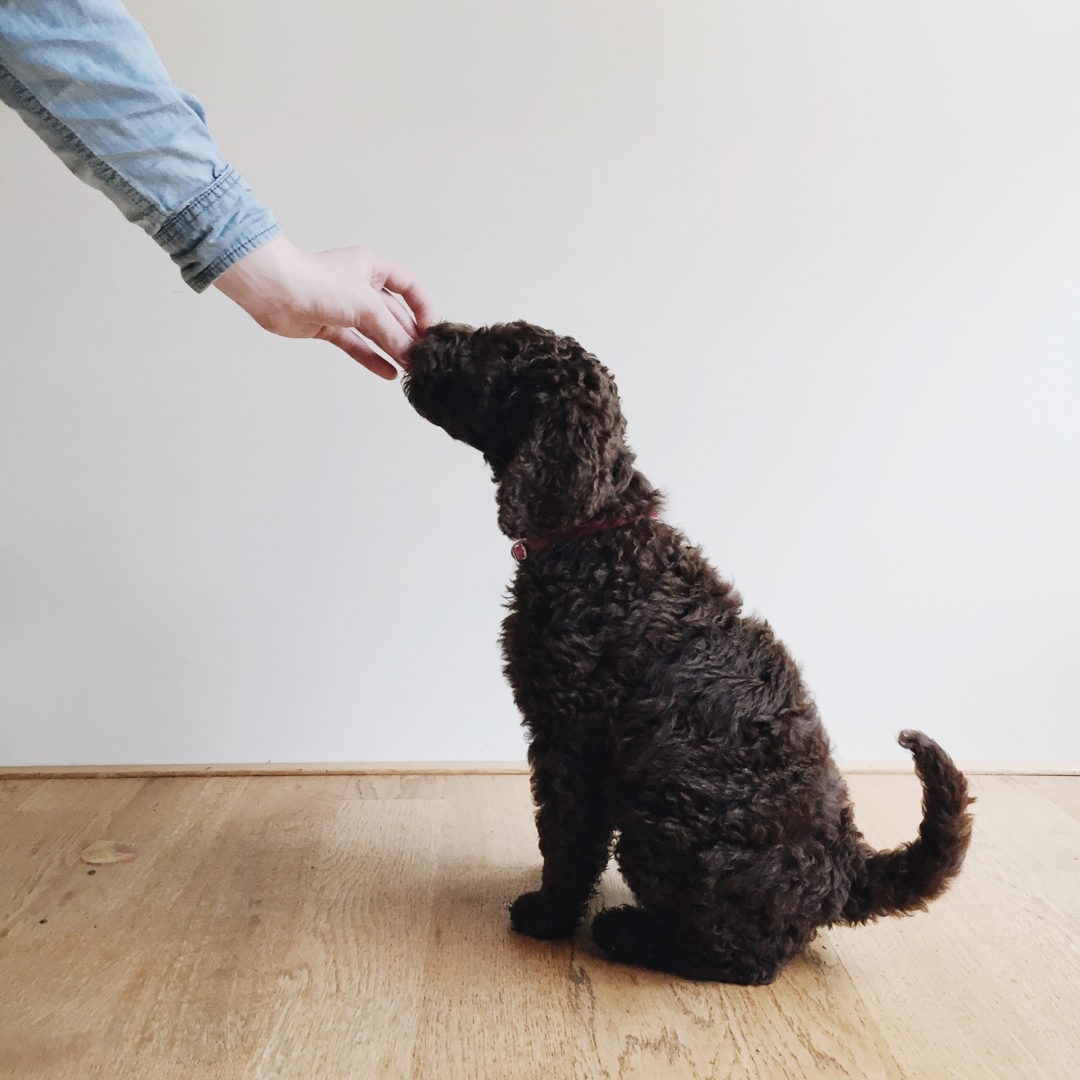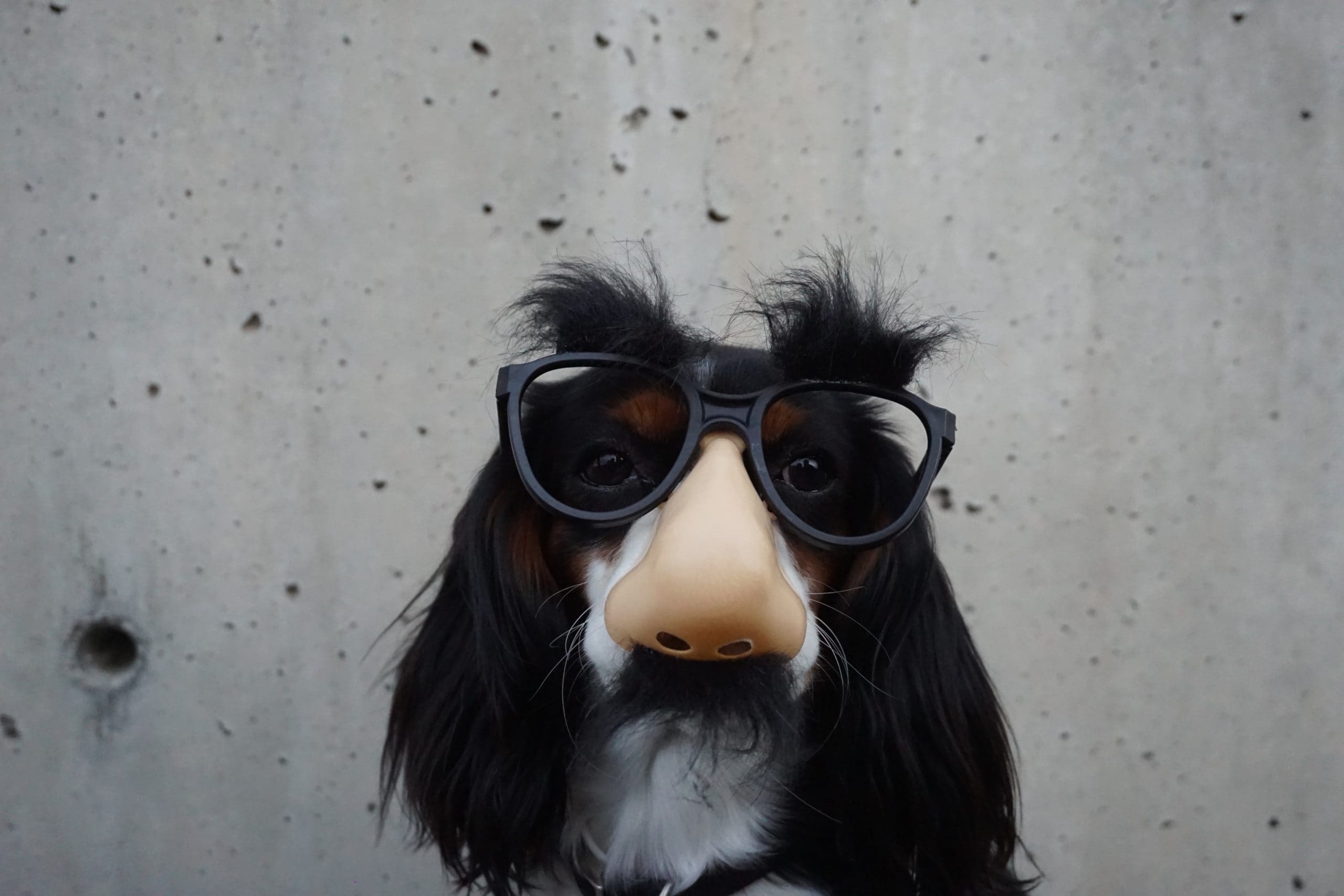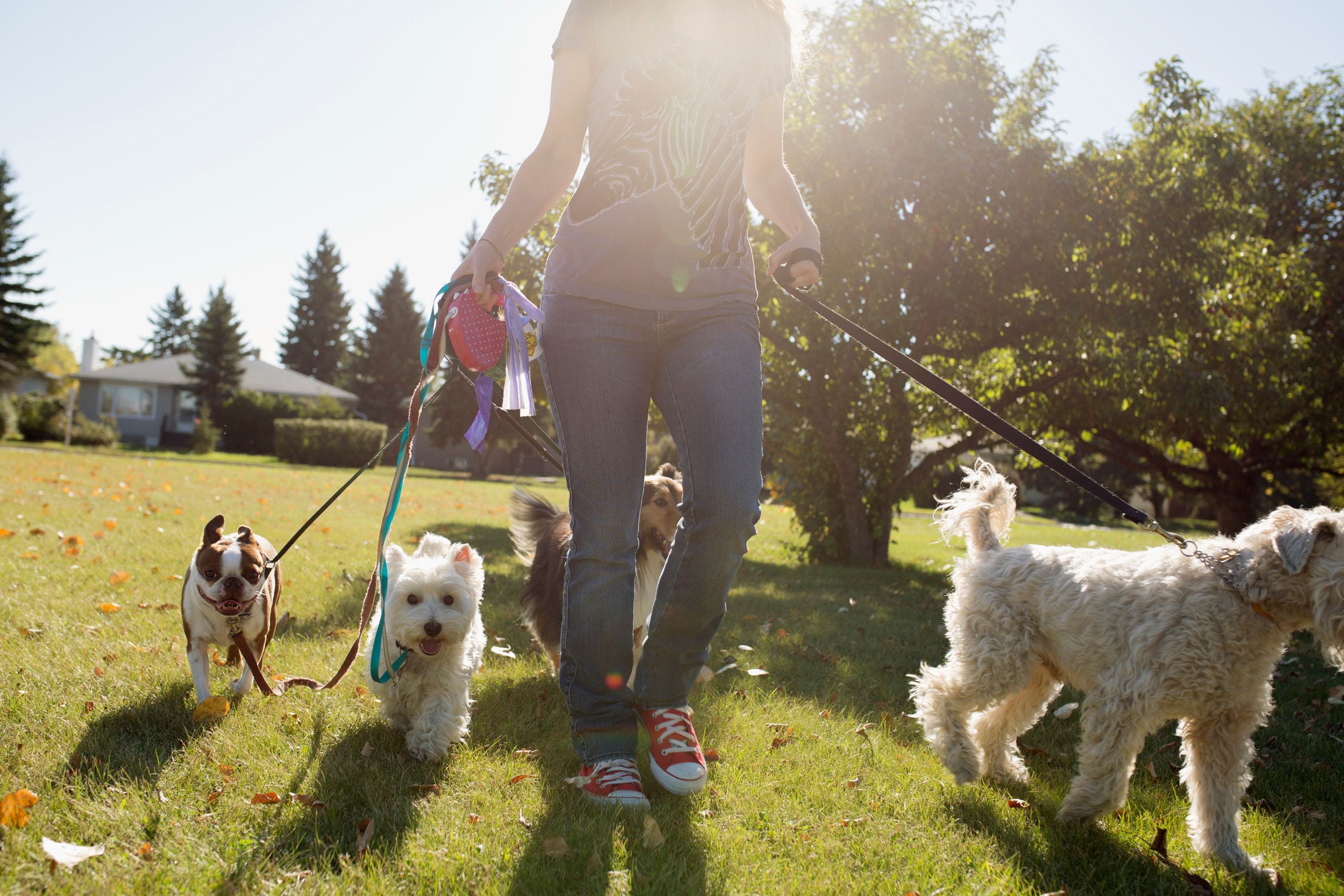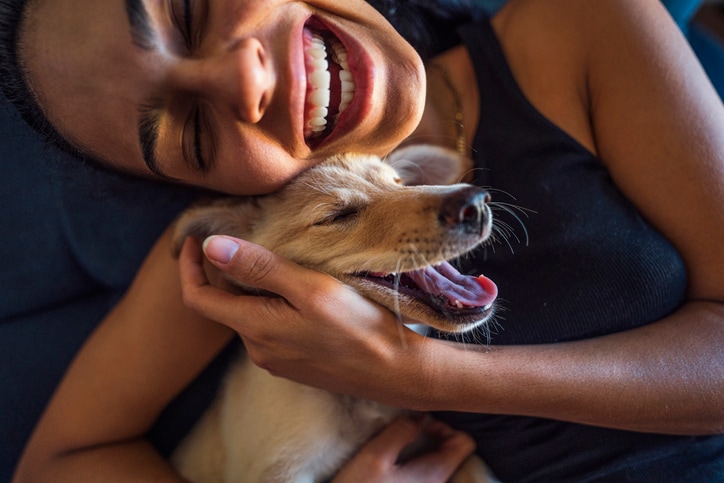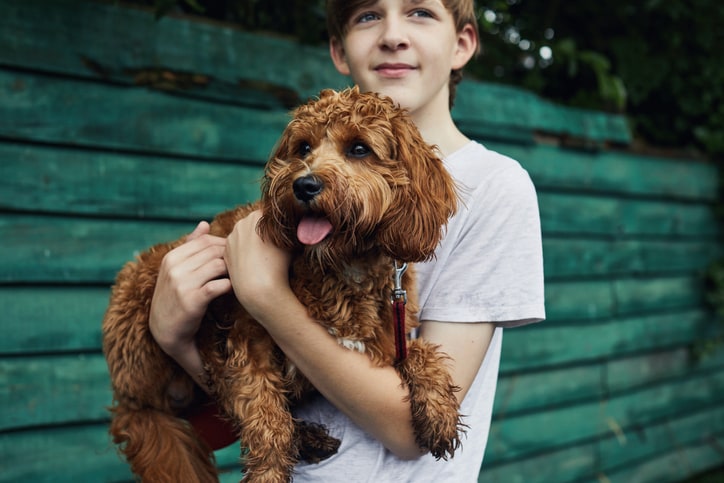Adding a puppy to the family can often be like one of those Pinterest fails. Your head is filled with all the adorable scenes of puppy kisses and playing fetch at the park, but the reality is consumed by countless hours of house training your dog and teaching them how to walk on a leash.
While puppies may be a lot of work, your commitment to developing a good routine will give you a loyal companion for years. When preparing to bring a puppy home, be sure to set up a good support team that includes both a knowledgeable veterinarian and a reliable pet sitter, as life so often goes off course from our best laid plans. This guide will help you get your home and family ready for your new puppy.
Meeting the family
Bringing a puppy home is an exciting time, especially for a family with children. As new owners, we must remember that this is a big life change for all participants — animal and human. This puppy will be in a new environment with new sounds, smells, and a brand new family to meet.
When first introduced to its new home, place your new puppy on a leash and allow it to roam its new environment under your control. You want it to feel comfortable, but a free-roaming puppy will often have accidents if left on its own for too long. While most new owners may feel a dog crate is isolating and cold, crate training is actually the easiest way to establish good sleep habits and bathroom routines. It also prevents them from getting into trouble while you’re sleeping, which keeps both them and your belongings safe. A veterinarian once told me that puppies don’t view their crate as a place of isolation but rather as a safe place, as we often feel in our own bedrooms.
When providing exercise, be sure to keep your puppy on a short leash by your side. Do not allow the puppy to pull and lead you. Owners want to establish dominance, so the puppy knows to follow your command. When your puppy’s about 4 to 6 months old, look into obedience school and ways to socialize it. Teaching your dog to follow commands will ensure you can keep it safe.
Teaching a puppy to socialize around 12 weeks will make for an easier lifestyle. When expecting visitors, keep your puppy on a leash to greet the visitor at the door, do not allow them to jump, and provide positive reinforcement by allowing your visitor to give a treat for a proper greeting. Like children, puppies love and respond well to frequent positive reinforcement.
House training
Like a newborn baby, a puppy will give you countless hours of joy while zapping all your free time and some hours of sleep in the first few weeks home. House training takes a lot of commitment, but once a good routine is established, you can resume normal living.
House training a puppy begins with a good routine, patience, and positive reinforcement. Plan to take your puppy outside to the same spot around the same time each day, being mindful to plan for times right when you wake up, before bed, immediately after eating, a nap, or physical exercise. The general rule of thumb is to take a puppy outside as many hours as their age plus one hour, so a 2-month-old puppy needs to go out every three hours.
Purchasing a puppy who was raised with its mom and dad versus a raised in a crate in a store will be easier to train. Puppies in stores use the restroom in their crate, while puppies raised with their parents are trained from birth to follow their parents outside to relieve themselves.
Puppy proofing
Puppies love to explore new places, so do your new furry friend and yourself a favor and spend the time on some preventative puppy proofing to keep all your favorite things intact.
-
Keep electrical cords covered.
-
Tie up window cords and curtains.
-
Put toxic cleaning supplies/chemicals in higher cabinets.
-
Invest in a tall, heavy duty trash can with a lid that is difficult to knock over.
-
Purchase a crate for crate training or a baby gate to keep the puppy in a small place, such as the kitchen, with easily washable floors.
-
Don’t give your puppy old shoes and stuffed animals. Invest in appropriate toys that belong solely to them so your puppy knows the difference between his rubber ball versus your daughter’s favorite stuffed animal and your brand new sandals.
-
Don’t let them get away with things because they’re small. If you don’t want to a 60-pound snoring dog in your bed, then don’t allow it to sleep there as a puppy. Establish your routines early, because breaking bad habits is infinitely harder.
Develop a proper feeding schedule
While we can often be swayed to buy the less expensive item on the shelf, feeding your puppy high quality food is a key competent to keeping your fur baby healthy. If you are unsure of which brand to pick, speak to your veterinarian to see what they recommend. Choose a brand and stick with it, as oftentimes switching brands can upset your little one’s tummy. While you want to control the amount of food they receive, be sure to always keep a bowl full of water available. Be mindful that puppies need more food than an adult dog to keep up with their rapid growth spurts.
Feed your puppy multiple times a day according to its age:
-
8-12 weeks: 4 meals per day
-
3-6 months: 3 meals per day
-
6-12 months: 2 meals per day
Small or toy breed dogs may require more frequent feedings, about every two to three hours to avoid a drop in their blood sugar.
What not to feed a puppy
Have you ever heard the phrase “puppy dog eyes” — those sweet little eyes that beg you to give into their every desire? While they are hard to resist, owners should avoid feeding scraps from the table to encourage proper eating habits and for the dog’s own safety. When it comes to table scraps, the following food items are an absolute no for dogs, as they present a risk to your dog’s health:
-
Chocolate
-
Grapes and raisins
-
Chicken bones
-
Raw fish and raw meat
-
Sugar
-
High-fat foods, such as macadamia nuts and avocados
-
Dairy
-
High-fat meats, such as bacon
-
Onions and garlic
-
Caffeine and alcohol
What products does my puppy need
The aisles of your nearest pet store are filled to the brim with products you may or may not need. As a vet once told me: Just because a dog food company made it doesn’t mean it’s good for your dog. Sadly, some companies put the idea of making money before the wellness of their consumers. Do your research, talk to your veterinarian, and invest in these helpful products:
-
Metal food and water bowls
-
A sturdy leash and nylon collar
-
Identification tags for the collar
-
A crate pillow or snuggle nest
-
Small puppy treats
-
Good quality dog food designed for puppies (know your dog’s weight before shopping)
-
A bristle comb
-
Non-toxic dog shampoo
The growing pains of raising a puppy
Owning a puppy requires a great deal of patience, flexibility, and more often than not, the loss of at least one pair of your favorite footwear. While most negative behaviors can be eliminated by proper training, the job of pet owner is not with pitfalls.
First and foremost, a puppy requires a lot of training. They must be house trained, crate trained, and even trained to play with others. For the first few months, their every need comes before your own. Between the hours of training, they must be fed frequently, walked often to burn off that puppy energy, and constantly praised for positive behavior.
If you live alone, this kind of dependency may be just what you’re looking for, but if you’re busy with kids or work or other life obligations, you may want to push pause on the purchasing of a puppy.
The bills and expense that come along with your newfound love could be surprising. In addition to basic necessities, vet bills quickly pile up in a dog’s first year of life. If all this information is taking you by surprise, there’s an easy solution. Don’t panic. Slowly walk away from that adorable puppy and run to the nearest pet shelter. There are plenty of older dogs looking to be adopted. Rescue one and give them a forever home!
Read next: The 101 best quotes about dogs

